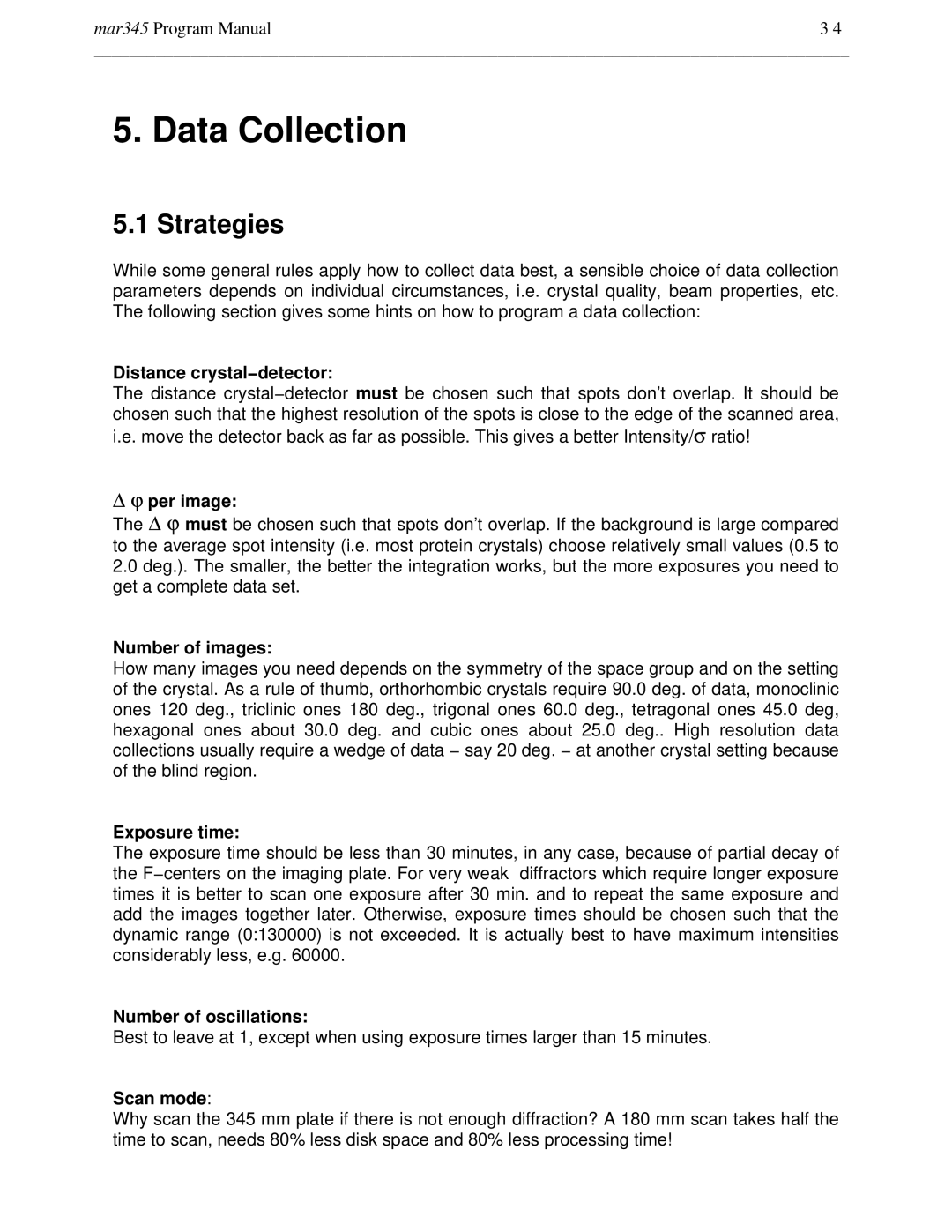mar345 Program Manual | 3 4 |
______________________________________________________________________________________
5. Data Collection
5.1 Strategies
While some general rules apply how to collect data best, a sensible choice of data collection parameters depends on individual circumstances, i.e. crystal quality, beam properties, etc. The following section gives some hints on how to program a data collection:
Distance crystal−detector:
The distance crystal−detector must be chosen such that spots don’t overlap. It should be chosen such that the highest resolution of the spots is close to the edge of the scanned area, i.e. move the detector back as far as possible. This gives a better Intensity/σ ratio!
∆ϕ per image:
The ∆ ϕ must be chosen such that spots don’t overlap. If the background is large compared to the average spot intensity (i.e. most protein crystals) choose relatively small values (0.5 to
2.0deg.). The smaller, the better the integration works, but the more exposures you need to get a complete data set.
Number of images:
How many images you need depends on the symmetry of the space group and on the setting of the crystal. As a rule of thumb, orthorhombic crystals require 90.0 deg. of data, monoclinic ones 120 deg., triclinic ones 180 deg., trigonal ones 60.0 deg., tetragonal ones 45.0 deg, hexagonal ones about 30.0 deg. and cubic ones about 25.0 deg.. High resolution data collections usually require a wedge of data − say 20 deg. − at another crystal setting becaus e of the blind region.
Exposure time:
The exposure time should be less than 30 minutes, in any case, because of partial decay of the F−centers on the imaging plate. For very weak diffractors which require longer exposur e times it is better to scan one exposure after 30 min. and to repeat the same exposure and add the images together later. Otherwise, exposure times should be chosen such that the dynamic range (0:130000) is not exceeded. It is actually best to have maximum intensities considerably less, e.g. 60000.
Number of oscillations:
Best to leave at 1, except when using exposure times larger than 15 minutes.
Scan mode:
Why scan the 345 mm plate if there is not enough diffraction? A 180 mm scan takes half the time to scan, needs 80% less disk space and 80% less processing time!
